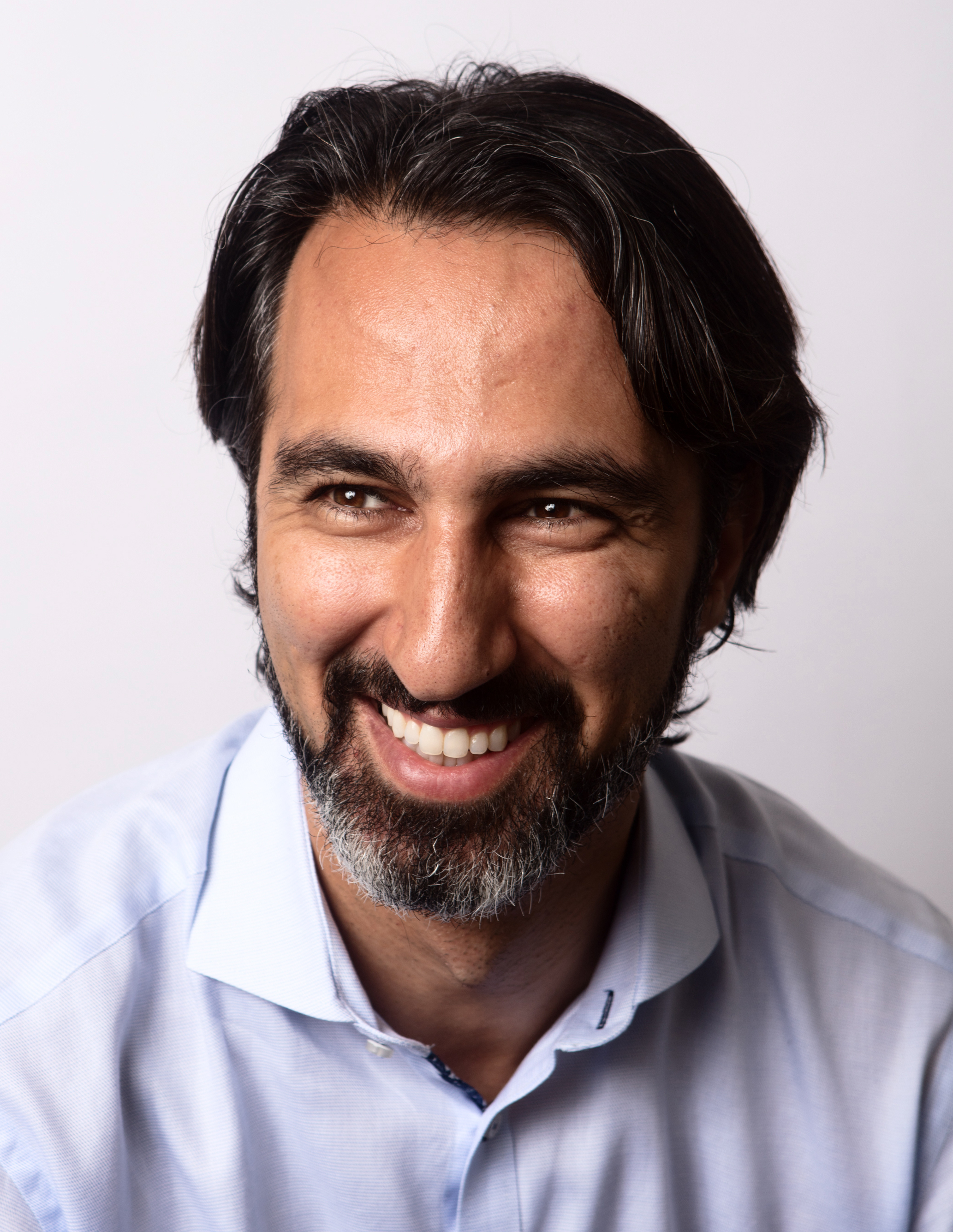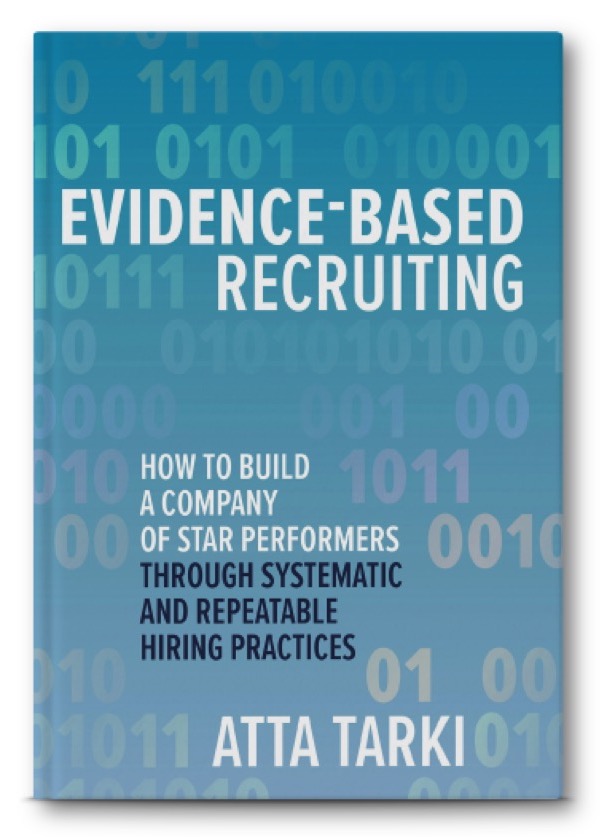
“There are only two ways to establish competitive advantage: do things better than others or do them differently.”
That pithy advice comes from Karl Albrecht, the German entrepreneur who co-founded the discount supermarket chain Aldi.
Renowned executive recruiting expert Atta Tarki believes the formula for competitive advantage doesn’t have to be an either/or proposition. He suggests that employing a fresh approach to hiring can enable an organization to do things both better and differently to beat the competition.
Tarki details his approach in his new book Evidence-Based Recruiting: How to Building a Company of Star Performers Through Systematic and repeatable Hiring Practices.
Drawing on extensive research, years of experience interviewing candidates, and first-hand conversations with senior executives as companies like Google and Netflix, Tarki outlines a scalable method for attracting—and retaining—top talent.
Rodger Dean Duncan: How does “evidence-based recruiting” differ from other hiring practices?

Atta Tarki: Most business professionals rely too heavily on their intuition when making hiring decisions. It’s not that intuition should be completely dismissed. It’s that an evidence-based method relies on a more balanced approach—drawing on both quantitative and qualitative information.
A number of other fields have already made the transition to evidence-based assessment methods, including psychology and medicine, but also in business fields such as marketing. By understanding the current fact base, and continuously improving this fact base by collecting more data, hiring managers can achieve better hiring outcomes than by applying ad hoc methods or over-relying on their intuition.
Duncan: If evidence-based recruiting produces superior results, why aren’t more organizations doing it?
Tarki: This transformation has already begun behind the scenes. Hundreds of companies are building up their people-analytics teams to improve the accuracy of their hiring predictions. Tech companies like Facebook, IBM, and Google are leading the way. However, there are also a number of non-tech firms such as Schneider Electric, Nestle, and Liberty Mutual that have built large people-analytics teams.
These companies are slowly but surely raising the odds of gaining a competitive edge through better hiring results. It’s just that they don’t advertise it. If you think about it, a company that has recently learned how to gain a competitive edge through better recruitment practices shouldn’t tell their competitors about this new skill. If they did, it wouldn’t be a competitive advantage anymore.
Other companies have not followed suit yet because it’s difficult to develop and execute. Changing to an evidence-based recruiting process requires a large time and monetary investment, as well as specialized expertise that is hard to come by.
Duncan: What are some of the most common mistakes made by hiring managers?
Tarki: Most hiring managers look for overly simplistic advice on how they can spot talent. This can be compared to following a fad diet. People think something like “These scientists can’t make up their minds. One day Diet Coke is better for you, the next day regular Coke is better. I will therefore dismiss everything the scientists are saying and instead follow simplistic advice from some fad diet magazine.”
In other words, there’s a lot of noise out there and most hiring managers get tired of trying to evaluate the quality of the information. The good advice is mixed together with snake oil and most people don’t have the time or the specialized know-how to tell them apart.
As a result, most hiring managers fail to develop evidence-based methods and instead rely on ad hoc pointers they’ve picked up by word of mouth. The truth is that hiring superior talent is complex and difficult—you will achieve better results by following a systematic approach to attracting and evaluating talent, not by switching from one method to the next depending on the flavor of the month. You would be much better served by evaluating the effectiveness of your own hiring methods or by learning from external parties who follow evidence-based methods.

Duncan: What are the costs of “bad hires,” and why do so many organizations seem to tolerate those costs?
Tarki: There are three main reasons companies tolerate the costs of bad hires.
First, they think it’s more effective to hire average performers and train them to become top performers. Even if companies rarely say this explicitly, it’s often implied by their behavior.
The second reason is they don’t believe poor hiring decisions are all that costly.
And finally, they don’t know how to do otherwise. That is, even if they do believe that poor hiring decisions are costly, they don’t believe they can improve their hiring results in any meaningful way. So they don’t see any real value in trying.
Hiring mistakes are costlier than they seem at first glance because the direct costs of a bad hire are usually just the tip of the iceberg.
Direct costs include hiring and onboarding costs, increased cost of over-hiring, lost revenue opportunities, and separation costs. Indirect costs associated with hiring mistakes include lost time, morale implications for the team, reputation risks for the company, and management distraction. There are many more indirect costs. For example, any time spent onboarding or coaching up underperforming hires is time not spent doing something else. What’s more, a bad hire can be a drain on morale for teammates and colleagues and a negative distraction for management. In the age of Glassdoor and anonymous review culture, it also poses reputation risks for the company. These are all factors that companies need to consider when making a new hire.
Bottom line, while estimates vary quite a bit, most experts agree that the cost of a bad senior-level hire at least equals the position’s annual salary.
Duncan: Rather than rely on the “post and pray” method of finding good employee candidates, how can hiring managers more effectively engage promising candidates?
Tarki: The question CEOs should ask themselves is, “Are our best hires sourced through a systematic, repeatable, and scalable process, or did they come to us through a series of random events?” If it’s the latter, that’s just not sustainable. In order to consistently improve the quality of your hires, you have to focus on changing that.
If your firm does not have a systematic and repeatable sourcing strategy, beyond posting on job boards, chances are you are not truly competing for top-tier talent in the market. Start doing active outreach to candidates. Ask your employees and others in your network for referrals. Evaluate the effectiveness of your various recruiting methods. Increase your spending on the methods that work and discontinue the ones that don’t yield satisfying results.
At our executive search firm, a fifth of the candidates who make it to a first-round interview for a recruiting role come from employee referrals. Roughly half come to us through active outreach. As a result, more than two-thirds of recruiter candidates come from systematic and repeatable processes outside of job boards.
Duncan: You urge companies to “hire missionaries, not mercenaries.” What does that mean?
Tarki: Unemployment rates are at 50-year lows. In this environment, it’s easy to think you can solve your hiring needs by just increasing compensation. Paying right is important. However, the risk of overpaying is that you end up with a bunch of mercenaries—people who will jump for any opportunity that offers a tiny bit extra cash.
You will find better candidates by recruiting individuals who derive satisfaction from other aspects of the work than the compensation alone. Ask yourself “What would the right person be interested in, in terms of what our company does, the role’s core responsibilities, our culture or other soft factors?” Then you can focus on finding candidates who actually care about these traits and forget about candidates who don’t, even if they are qualified. This way you will end up hiring more missionaries, i.e., people who care about the role for reasons beyond the monetary compensation—people who will take on more responsibilities, contribute to your culture and help elevate your company’s performance and outcomes.
Duncan: LinkedIn’s survey “Why & How People Change Jobs” indicates that forging an exciting career path is a primary reason for switching jobs. How can that finding provide context for a hiring manager’s interaction with job candidates?
Tarki: Keep in mind that you might be more excited about finding someone who can fill the current void in your organization, but the person you are interviewing is more excited about how this role can help them build their dream career. Strike the right balance in that conversation. Don’t oversell the role as something it’s not. Be frank about what you need to get done right now. But also take some time to understand the career aspirations of the candidate and help them understand how this role will help them achieve those goals.
Duncan: What are some best practices that job candidates should use in researching companies that are trying to recruit them?
Tarki: I’m surprised by how many candidates miss the basics. Research the company’s website, press releases, and press coverage. Then take a few minutes to look up the LinkedIn profile of each individual who is interviewing you.
Finally, remember that the interviews are supposed to be a two-way street. Take the time to write up some thoughtful questions about the company and the day-to-day responsibilities of the role.

